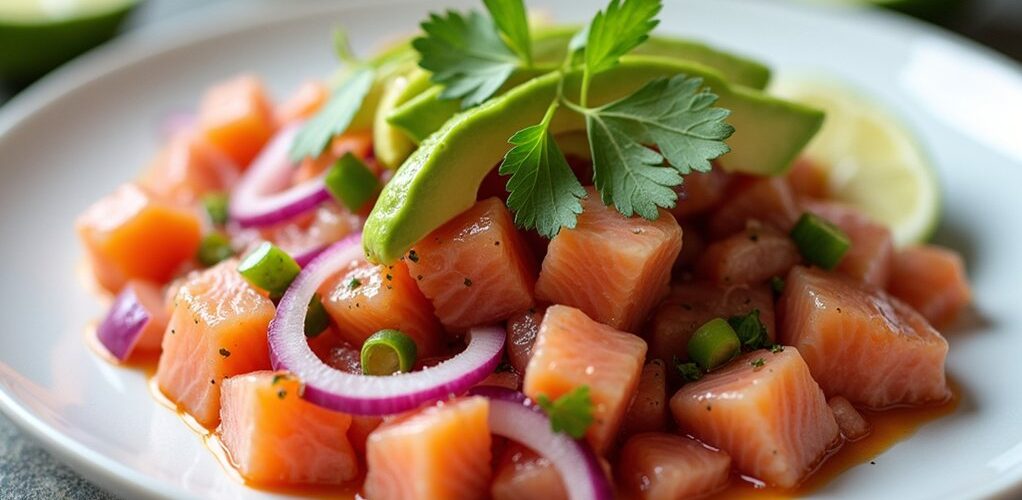
Ceviche is an exceptionally low-carb dish, containing only 2.7 grams of net carbs per serving when prepared traditionally with fresh fish and citrus juice. The dish's primary ingredients, including raw fish, lime juice, and minimal vegetables, align perfectly with ketogenic dietary requirements while delivering 22 grams of protein and essential omega-3 fatty acids. Traditional preparation methods maintain the nutritional integrity of the seafood, and thoughtful modifications can further reduce carbohydrate content for strict low-carb lifestyles. Understanding regional variations and proper preparation techniques enhances this dish's versatility.
Key Takeaways
- Traditional ceviche contains only 2.7g of net carbs per serving, making it naturally low-carb and suitable for ketogenic diets.
- Fresh fish and seafood used in ceviche contain virtually zero carbohydrates, with minimal carbs coming from citrus and vegetables.
- A typical ceviche serving provides 22g of protein and 6.2g of healthy fats while maintaining low carbohydrate content.
- Low-carb vegetables like cucumber and bell peppers can replace traditional starchy ingredients while maintaining authentic ceviche flavors.
- The dish focuses primarily on fresh fish protein, with carb-containing ingredients serving only as flavor enhancers.
Understanding Traditional Ceviche Preparation
Diving into traditional ceviche preparation reveals a remarkably low-carb dish centered around fresh, raw fish transformed by citrus juice. The preparation emphasizes the natural qualities of fresh fish, which forms the foundation of this carbohydrate-conscious dish, while citrus acids, typically lime juice, effectively "cook" the seafood without applying heat.
The traditional method maintains the seafood's nutritional integrity while creating a satisfying texture and flavor profile.
While additional ingredients like onions, tomatoes, and peppers contribute to the dish's complexity, they are used sparingly, ensuring the carbohydrate content remains minimal.
The versatility of ceviche allows for various seafood options, from white fish to shellfish, while maintaining its low-carb characteristics through careful ingredient selection and authentic preparation techniques.
Carbohydrate Content Analysis
Traditional ceviche naturally contains minimal carbohydrates, with a standard serving providing approximately 2.7g of net carbs primarily from vegetables and citrus components.
The carbohydrate content can vary notably based on added ingredients, particularly when incorporating higher-carb fruits or vegetables into the recipe.
For those following a ketogenic diet, ceviche can be easily modified by limiting carb-heavy additions and focusing on fish, lime juice, and low-carb vegetables, resulting in an even lower net carb count.
Net Carbs in Ceviche
When examining the carbohydrate content of ceviche, one finds remarkably low net carb values that align well with low-carb dietary preferences.
Traditional ceviche preparations typically contain just 3.1g of net carbs per serving, with most carbohydrates coming from small amounts of vegetables like tomatoes and onions.
For those following stricter low-carb regimens, keto-adapted versions of ceviche can further reduce the carbohydrate content to approximately 2.7g per serving by incorporating alternatives such as pickled avocado.
The dish's primary ingredient, seafood, contributes virtually no carbohydrates while providing substantial protein.
Those monitoring their carbohydrate intake should remain mindful of additional ingredients that might affect the total carb count, particularly when recipes include sweeteners or extra vegetables.
Traditional Vs Keto Portions
A detailed comparison of traditional and keto ceviche portions reveals significant differences in their carbohydrate profiles. Traditional ceviche typically contains starchy ingredients like corn and sweet potatoes, resulting in 6-10 grams of carbohydrates per serving.
In contrast, keto-friendly versions remain low in carbs by focusing on alternative ingredients.
Key differences between traditional and keto ceviche portions:
- Traditional servings include starchy components that contribute to higher carb counts.
- Keto versions substitute high-carb ingredients with diced pickled avocado.
- Keto adaptations maintain approximately 2.7 grams of carbohydrates per serving.
The substitution of traditional starchy elements with low-carb alternatives in keto ceviche creates a satisfying dish that accommodates carbohydrate-restricted diets while preserving the classic flavors and textures of this beloved seafood preparation.
Health Benefits of Raw Fish Consumption
Raw fish consumption offers a remarkable array of health benefits that make it a nutritionally superior choice for many diners. A standard serving of fish provides approximately 22 grams of high-quality protein while maintaining minimal carbohydrate and fat content, making it an excellent option for health-conscious individuals. The uncooked preparation method preserves valuable omega-3 fatty acids, which contribute to reduced inflammation, enhanced cardiovascular health, and ideal brain function. Additionally, raw fish delivers essential nutrients including vitamin D, B vitamins, iodine, and selenium, while supporting digestive health through probiotic properties, particularly when combined with fermented ingredients. When properly sourced and prepared, raw fish consumption proves to be both safe and nutritionally advantageous, offering a thorough array of health benefits that support overall wellness. A ketogenic diet can further complement the low-carb nature of raw fish, aiding in diabetes management and improved metabolic health.
Keto-Friendly Modifications
Making ceviche keto-friendly involves strategic modifications to traditional ingredients while maintaining the dish's essence and flavor profile.
Traditional fish choices like cod can be substituted with higher-fat options such as salmon or tuna, while citrus components can focus on lower-sugar alternatives like lime juice rather than sweeter citrus fruits.
The most significant adaptations come from replacing starchy vegetables with keto-approved alternatives, such as swapping traditional corn or sweet potato accompaniments with diced avocado, cucumber, or radish to maintain textural interest while minimizing carbohydrates.
To enhance the nutritional profile, consider serving ceviche with a side of non-starchy vegetables like leafy greens or bell peppers to provide essential vitamins and maintain low carb counts.
Simple Seafood Swaps
While traditional ceviche recipes already align well with keto dietary requirements, several simple seafood modifications can further reduce carbohydrate content while maintaining the dish's vibrant flavors.
The key lies in selecting the right seafood combinations and preparing them with fresh lime juice and low-carb accompaniments.
Consider these keto-friendly seafood options for your next ceviche:
- Cod or halibut, paired with diced cucumber for added crunch
- Fresh shrimp, complemented by bell peppers and cilantro
- Mixed seafood combinations featuring white fish and shellfish, topped with creamy avocado
These protein-rich alternatives guarantee minimal carbohydrate intake while preserving the authentic taste and texture of traditional ceviche.
Each option provides a distinct flavor profile when marinated in citrus, making the dish both versatile and diet-compliant.
Low-Carb Citrus Options
The versatility of citrus options in ceviche preparation opens up numerous possibilities for maintaining ketogenic dietary requirements.
While lime juice stands as the traditional choice, containing only 1g of carbohydrates per tablespoon, other citrus alternatives can provide similar flavor profiles while keeping carb counts minimal.
Incorporating combinations of lemon and grapefruit juice alongside the traditional lime juice can create complex flavor dimensions without compromising the dish's keto-friendly status.
These citrus options effectively "cook" the fish through their acidic properties while maintaining the dish's naturally low carbohydrate content of approximately 2.7g per serving.
When paired with fresh herbs like cilantro and low-carb additions such as pickled avocados, these citrus alternatives help create a satisfying ceviche that aligns perfectly with ketogenic dietary goals.
Veggie Alternatives Matter
Beyond the citrus foundation of ceviche lies an equally important consideration: the selection of vegetables that complement the dish while maintaining its low-carb profile.
Traditional starchy vegetables can be replaced with keto-friendly options that preserve the dish's authentic appeal while adhering to ketogenic principles.
When selecting low-carb alternatives for ceviche, consider these versatile options:
- Diced avocado provides creamy texture and healthy fats
- Cucumber adds invigorating crunch and minimal carbohydrates
- Bell peppers contribute vibrant color and essential nutrients
These modifications, combined with fresh herbs like cilantro, create a satisfying texture while keeping carbohydrate content low.
The strategic substitution of high-carb ingredients with low-carb vegetables guarantees that ceviche remains both delicious and compatible with ketogenic dietary goals.
Essential Ingredients for Low-Carb Ceviche
Creating authentic low-carb ceviche requires carefully selected ingredients that maintain the dish's traditional flavors while minimizing carbohydrate content. The foundation begins with fresh, skinless fish such as cod or sea bass, or alternatively, shrimp, which provide substantial protein without adding carbohydrates to the dish.
The acidic component comes from lime juice, which naturally "cooks" the seafood through a chemical process while keeping the carb count low.
Strategic additions of finely chopped red onions and diced tomatoes introduce essential flavor and visual appeal without greatly impacting the carbohydrate content. For added richness and healthy fats, incorporating avocado enhances the texture while maintaining the dish's low-carb profile, making it an excellent choice for those following ketogenic or carbohydrate-restricted dietary plans. Regular monitoring of blood sugar and ketones is crucial during the keto diet adjustment phase to avoid hypoglycemia, especially when incorporating low-carb dishes like ceviche into your diet.
Selecting the Right Fish Species
Selecting appropriate fish species stands as a fundamental step in crafting authentic low-carb ceviche that delivers both flavor and nutritional benefits.
The choice of fish represents the cornerstone of creating genuine low-carb ceviche, ensuring optimal taste while maintaining nutritional value.
When choosing fresh fish for ceviche, opt for skinless varieties that offer minimal carbohydrate content while maximizing protein value.
- Cod provides an excellent foundation, containing zero carbohydrates per 100 grams.
- Sea bass and snapper serve as equally suitable alternatives, maintaining the low-carb profile.
- Shrimp can complement or replace fish entirely, adding only 1 gram of carbohydrates per 100 grams.
Quality indicators for fresh fish include firmness to touch and a clean oceanic aroma.
It's essential to avoid processed or breaded options, which often contain hidden carbohydrates and added sugars that could compromise the dish's low-carb integrity.
Incorporating fatty fish like salmon in your ceviche can enhance its protein content, with about 20g of protein per 3-ounce serving.
Safe Handling and Food Safety Guidelines
While crafting delicious ceviche requires culinary skill, maintaining proper food safety protocols stands as equally essential for preventing foodborne illness and guaranteeing an enjoyable dining experience.
Safe handling begins with sourcing fresh seafood from reputable vendors and maintaining strict temperature control below 40°F throughout storage and preparation. Cross-contamination prevention requires dedicated cutting boards and utensils specifically for raw seafood handling.
When preparing ceviche, limit citrus juice marination to 30 minutes, which effectively "cooks" the fish while preserving ideal texture. This timeframe guarantees proper acid exposure without compromising the seafood's quality.
For maximum safety and flavor, consume the prepared ceviche within the same day, as extended storage can lead to deterioration and potential food safety risks.
Marination Techniques and Timing
The art of ceviche preparation hinges on precise marination timing, with citrus acids requiring 15-30 minutes to effectively "cook" raw fish to the proper texture.
Fish and seafood size greatly impact marination duration, as thinner cuts transform more quickly than thicker pieces, making careful monitoring essential for ideal results.
To prevent mushiness from over-marination, cooks should check the fish's firmness periodically and guarantee even citrus coverage by fully submerging all pieces in the acidic marinade.
Citrus Acid Cook Times
Precise timing plays an essential role in achieving the perfect ceviche texture through citrus acid marination. The process of "cooking" fish in citrus juice requires careful attention to duration, as the acid denatures proteins and transforms raw fish into a perfectly tender dish.
Key timing considerations for citrus acid cooking:
- Delicate fish varieties require approximately 15 minutes.
- Firmer fish can marinate up to 30 minutes.
- Over-marination beyond 30 minutes risks mushy texture.
The chemical reaction between citrus juice and fish proteins creates an opaque appearance, signaling the fish has been properly "cooked."
For ideal results, chefs should add accompanying ingredients, such as fresh vegetables and herbs, only after the initial marination process is complete, ensuring the fish achieves ideal texture and flavor balance.
Seafood Size Matters Most
Building upon proper citrus marination timing, seafood size and preparation techniques form the foundation of exceptional ceviche.
Whether using sea bass or other fish varieties, cutting the seafood into uniform 1cm x 1cm cubes guarantees consistent citrus penetration and ideal texture throughout the dish.
The precision in seafood preparation directly impacts the final product's quality. Shrimp requires a brief 30-second blanch before incorporation, while fish should marinate in lime juice for precisely 15-20 minutes.
This careful timing prevents the proteins from breaking down excessively, which could result in an undesirable mushy consistency.
After combining all ingredients, a 15-minute refrigeration period allows the flavors to harmonize while maintaining the seafood's structural integrity.
This methodical approach to size and timing guarantees a perfectly balanced, low-carb ceviche.
Preventing Over-Marinated Fish
Successful ceviche preparation hinges on preventing over-marination, which can transform pristine seafood into an unappetizing, mushy consistency. To maintain ideal texture and flavor, seafood should never marinate longer than 30 minutes in citrus juice.
Key steps for preventing over-marinated fish include:
- Limiting marination time to 15-20 minutes for fish, guaranteeing complete submersion in lime juice.
- Blanching shrimp for 30 seconds in boiling water before adding to citrus.
- Draining excess lime juice when using presentation molds to maintain texture.
These precise timing guidelines are essential for achieving the perfect balance between "cooking" the fish in acid and preserving its firm texture.
Following these techniques guarantees each bite of ceviche delivers the intended fresh, vibrant experience without compromising the seafood's natural qualities.
Alternative Citrus Options
While lime juice stands as the traditional foundation for ceviche, several other citrus options can create equally delicious and low-carb variations of this beloved dish.
Lemon juice serves as an excellent alternative, delivering similar tanginess while maintaining minimal carbohydrate content.
For those seeking subtle sweetness, small amounts of orange juice can be incorporated, though it should be used judiciously due to its higher sugar content.
Grapefruit juice offers a distinctive bitter note that pairs well with seafood while keeping carbs in check.
To enhance the citrus profile without adding significant carbohydrates, incorporating citrus zest proves particularly effective.
Adventurous cooks might explore exotic alternatives like yuzu or calamondin juice, which introduce unique flavors while adhering to low-carb principles.
Low-Carb Vegetable Accompaniments
Ceviche enthusiasts have numerous low-carb vegetable options to create fresh, crunchy side accompaniments that enhance the dish's texture and flavor profile. Traditional choices include diced cucumber, bell peppers, and radishes, which provide satisfying crunch while maintaining minimal carbohydrate content. For those seeking a creative low-carb base, spiralized zucchini noodles offer an innovative alternative that transforms the presentation while adding volume and nutrients to the dish. Including keto-friendly vegetables like arugula and asparagus can boost nutrient intake and support ketosis without adding excessive carbs.
Fresh Crunchy Side Options
To complement the vibrant flavors of a low-carb ceviche dish, several fresh and crunchy vegetable accompaniments offer both satisfying texture and nutritional benefits without adding significant carbohydrates.
When selecting fresh crunchy side options for ceviche, consider these low-carb alternatives:
- Cucumber slices and bell peppers provide a rejuvenating crunch while keeping carbohydrate content minimal.
- Thinly sliced zucchini and celery sticks offer fiber-rich alternatives that enhance the dining experience.
- Radishes and leafy greens like arugula add a peppery kick without compromising carb restrictions.
For added richness without increasing carbohydrates, creamy avocado serves as an excellent accompaniment, contributing healthy fats while maintaining the dish's low-carb profile.
These versatile options guarantee a satisfying meal while adhering to dietary preferences.
Zucchini Noodle Ceviche Base
Since traditional ceviche often rests on a bed of grains or tortillas, zucchini noodles present an innovative low-carb foundation that transforms the dish into a complete meal without compromising dietary goals.
With only 3 grams of carbohydrates per 100-gram serving, these versatile noodles provide a satisfying crunch while absorbing the vibrant flavors of the ceviche marinade.
Zucchini noodles enhance the nutritional profile of ceviche by contributing essential vitamins A and C, along with potassium, while maintaining the dish's low-carb integrity.
Their mild flavor profile complements the citrus and spice elements characteristic of ceviche, allowing the fresh fish and seasonings to remain the star attractions.
This thoughtful pairing creates a balanced, nutrient-rich meal that aligns perfectly with low-carb dietary preferences.
Nutritional Value Breakdown
A detailed examination of ceviche's nutritional profile reveals an impressively lean composition, with only 154 calories per serving. The dish's low carbohydrate levels, averaging 2.7g per portion, make it an excellent choice for those following ketogenic or low-carb dietary plans.
Key nutritional components include:
- 22g of high-quality protein from fresh fish, supporting muscle maintenance
- 6.2g of healthy fats, primarily from sources like avocado
- Minimal carbohydrates, making it suitable for carb-restricted diets
Additionally, the low carbohydrate content of ceviche can contribute to improved metabolic health by helping regulate blood sugar and insulin levels, aligning well with the benefits of the ketogenic diet. This nutritional breakdown demonstrates ceviche's value as a protein-rich, low-calorie option that maintains its wholesome qualities through the use of fresh ingredients.
The combination of lean protein and healthy fats, coupled with negligible sugar content, positions ceviche as an ideal choice for health-conscious diners.
Serving Size Recommendations
Determining the right portion size of ceviche helps maintain its benefits as a low-carb dish while ensuring satisfying meals.
Standard serving size recommendations suggest one cup (240g) of ceviche as an appropriate portion, containing approximately 6.1g of carbohydrates per serving.
For those following a ketogenic diet, portions can range from one to two cups, depending on individual dietary requirements and meal context.
When served as an appetizer, a half-cup to one-cup portion is suitable, while main course servings can extend to two cups.
To create a balanced meal while maintaining low-carb status, consider pairing ceviche with complementary sides like fresh greens or keto-friendly crackers.
It's important to note that carbohydrate content may vary based on specific ingredients used in preparation.
Popular Regional Variations
While ceviche maintains its essence as a citrus-marinated seafood dish across regions, distinct variations have emerged throughout Latin America, each reflecting local culinary traditions and ingredient availability.
These regional interpretations showcase the versatility of fresh fish and seafood preparations, adapting to local tastes and cultural preferences.
- Peruvian ceviche emphasizes fresh fish like sea bass, complemented by sweet potato and corn.
- Ecuadorian versions feature shrimp or mixed seafood, uniquely paired with popcorn.
- Mexican preparations incorporate tomatoes and avocado, with a spicier profile.
The Caribbean adds its own twist to traditional ceviche by introducing coconut and tropical fruits, creating a sweeter profile that distinguishes it from its South American counterparts.
Each variation maintains the dish's core principles while celebrating regional ingredients and flavors.
Storage and Freshness Tips
Proper storage techniques and attention to freshness play vital roles in maintaining ceviche's ideal flavor, texture, and safety. When preparing ceviche, selecting high-quality, sushi-grade fresh fish is important, as the dish relies on citrus juice rather than heat for preparation.
To preserve peak quality, limit the marination time to 30 minutes, preventing the fish from becoming mushy due to prolonged acid exposure.
Any leftover ceviche should be stored in an airtight container in the refrigerator and consumed within 24 hours to maintain its texture and flavor profile. For pre-marinated ceviche, refrigeration is necessary, and consumption should occur within one day.
Following these storage guidelines guarantees the dish remains safe while delivering the best possible taste experience.
Pairing Suggestions for Keto Dieters
With proper storage mastered, keto dieters can explore numerous complementary pairings to enhance their ceviche experience. The naturally low-carb nature of fresh fish ceviche makes it an excellent foundation for creative, keto-friendly combinations.
- Fresh vegetables add texture and nutrients while maintaining ketosis – diced tomatoes, crisp cucumber slices, and creamy avocado chunks complement the fish perfectly.
- Keto Mixed Seed Crackers provide a satisfying crunch factor without compromising carbohydrate limits.
- Fresh herbs and aromatics like cilantro and jalapeños heighten flavor complexity while keeping carbs minimal.
For ideal enjoyment, serve the ceviche chilled with a generous squeeze of lime juice. Differentiating between total and net carbohydrates is essential for keto management and ensures that even creative pairings remain within dietary guidelines. This combination creates a revitalizing, well-balanced dish that aligns perfectly with ketogenic dietary goals while maximizing taste and satisfaction.
Frequently Asked Questions
Is Ceviche Low in Carbs?
Ceviche ingredients, primarily consisting of fresh fish, citrus juice, and non-starchy vegetables, contribute to its naturally low carbohydrate content, typically containing only 3.1g of carbs per serving.
What Is the Best Fish to Eat on a Low Carb Diet?
Healthy options for low-carb diets include salmon, tuna, cod, halibut, mackerel, and shrimp. These fish provide high protein content, essential omega-3 fatty acids, and minimal carbohydrates, typically under 1g per serving.
How Many Carbs Are in Fish Ceviche?
Fish ceviche contains approximately 2.7g of carbs per serving. The minimal carbohydrate content comes from basic ceviche ingredients like vegetables and citrus, while the fish itself contributes virtually no carbs.
Is Fish Ceviche Good for Diabetics?
Fish ceviche benefits diabetics due to its low carbohydrate content, high protein levels, and omega-3 fatty acids. The dish's fresh ingredients and citrus components help maintain stable blood sugar levels.
Conclusion
Traditional ceviche, prepared with fresh fish and minimal carbohydrate-rich ingredients, aligns perfectly with low-carb and ketogenic dietary goals. When made with citrus juice, fresh seafood, and vegetables like onions and peppers, ceviche typically contains fewer than 5 grams of net carbs per serving. By avoiding high-carb additions and focusing on protein-rich seafood, this Latin American dish offers a flavorful, nutritious option for those monitoring their carbohydrate intake.

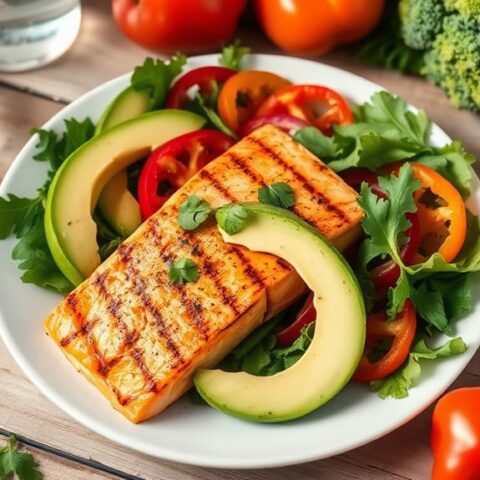

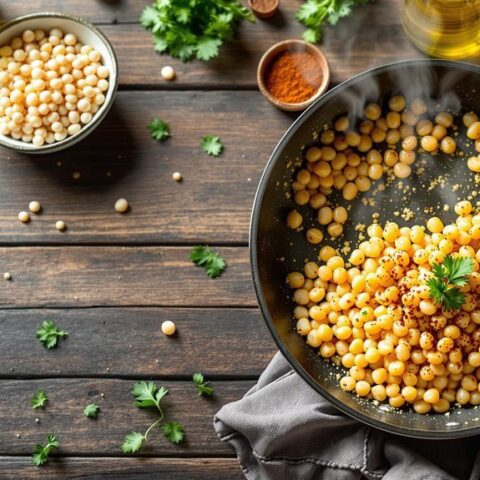

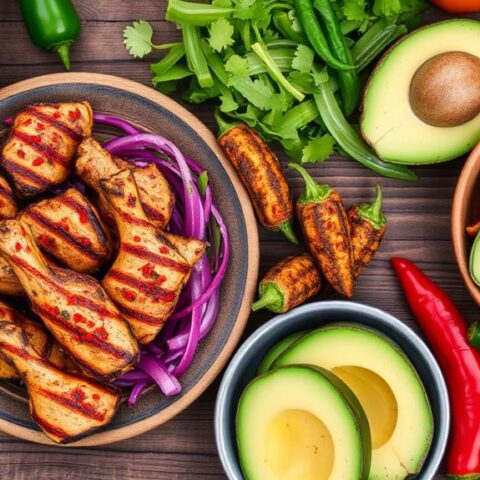
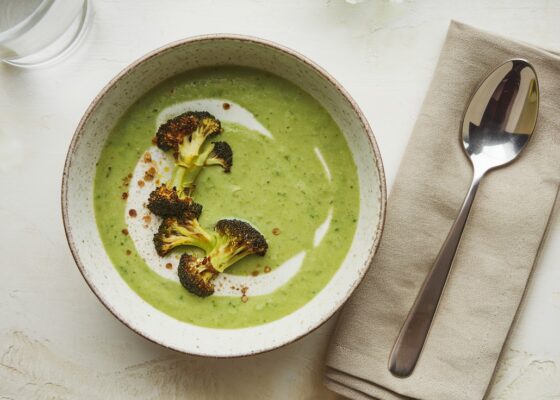
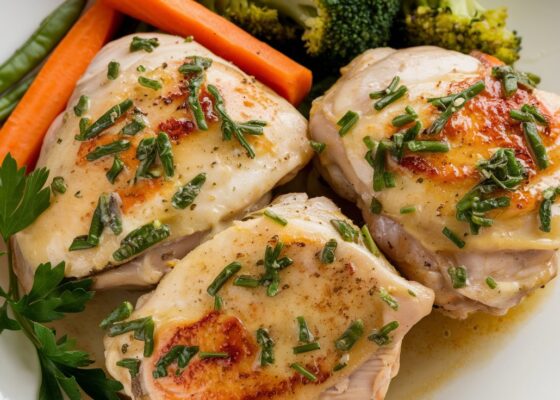
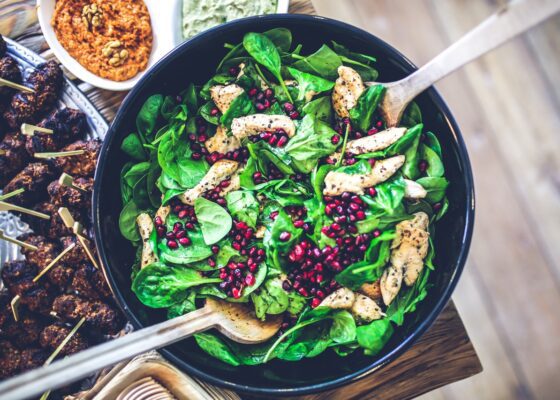

No Comments